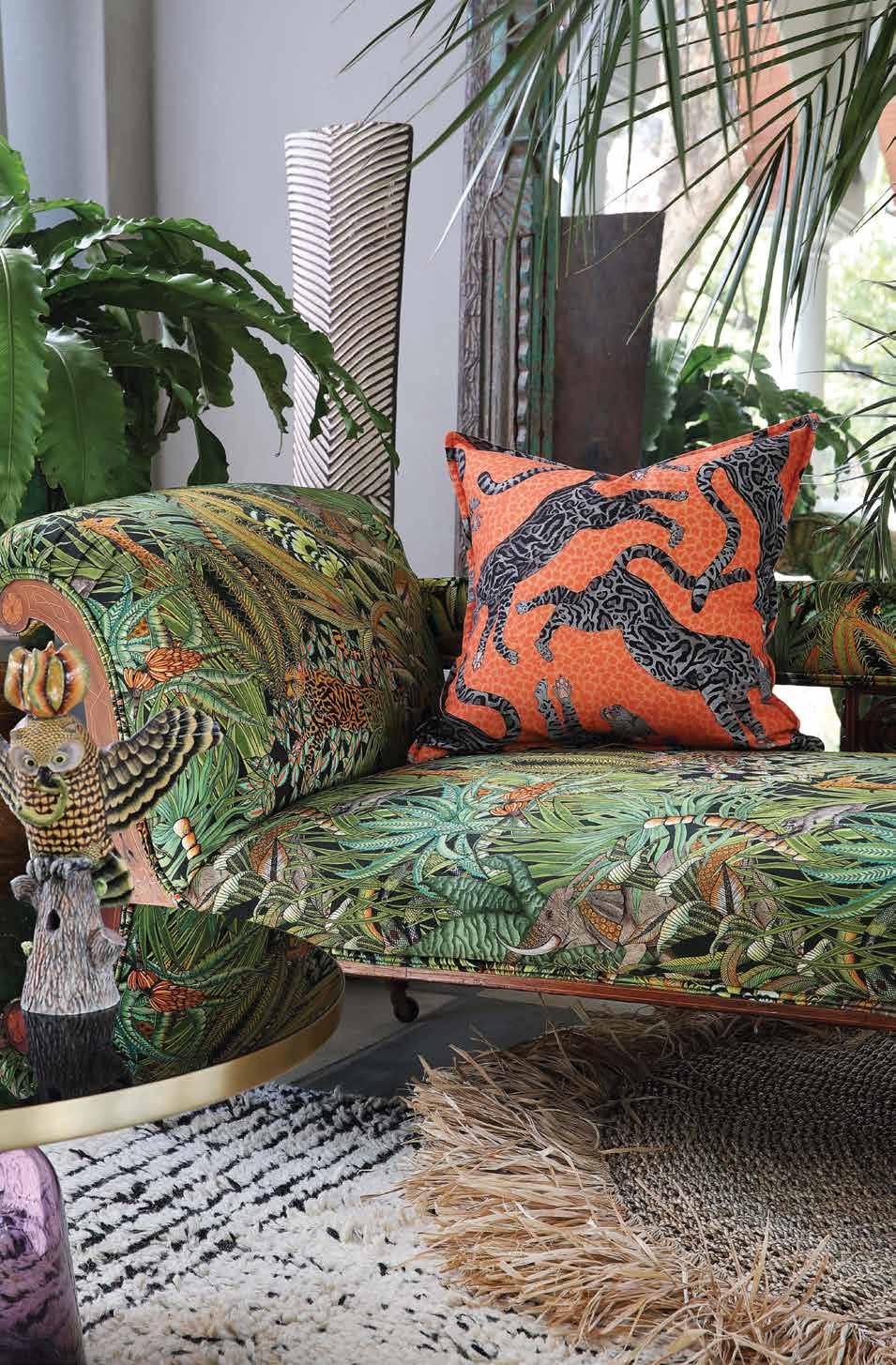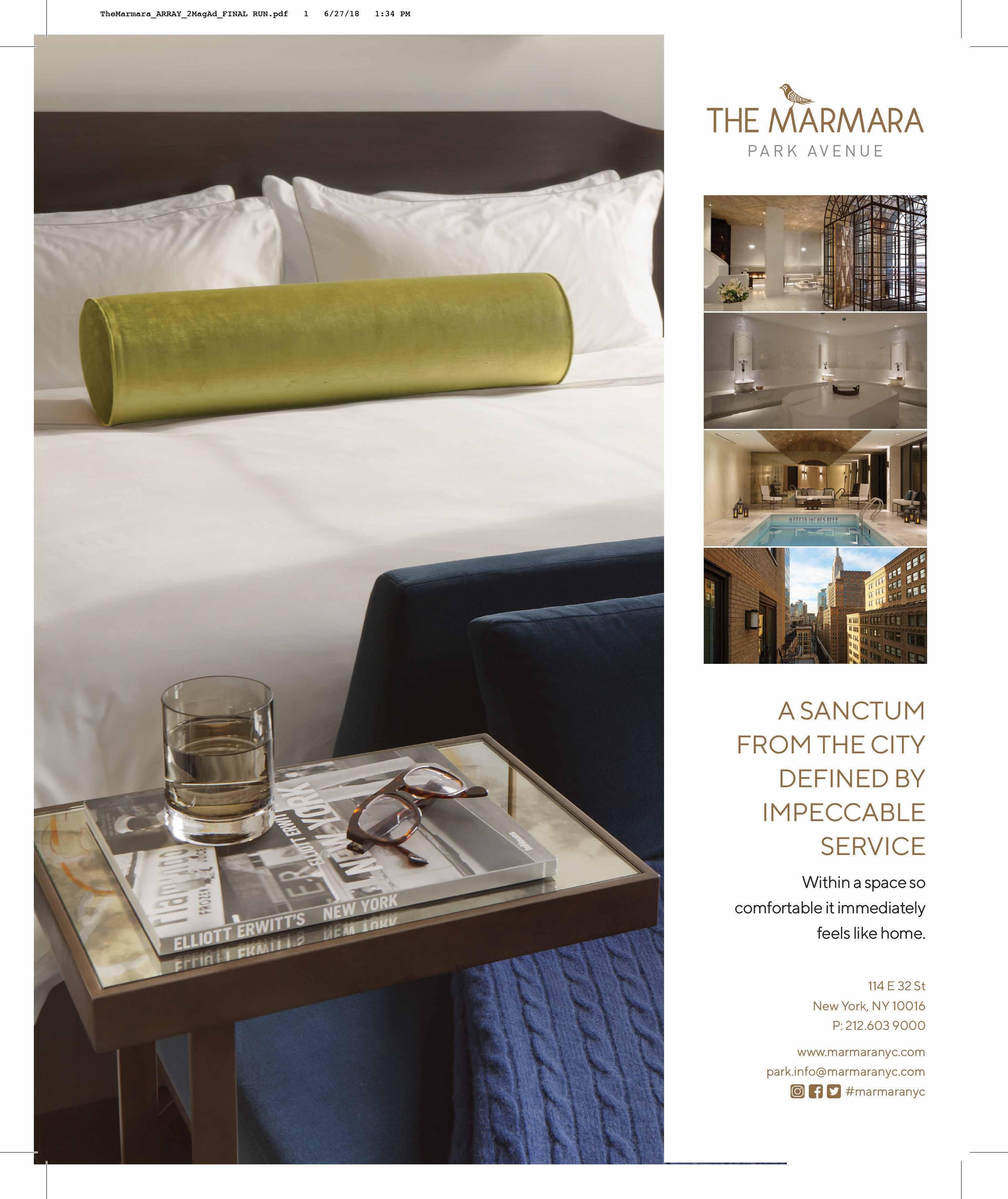
3 minute read
BACKSTORY By Tom Scarcella
from Array Magazine
Backstory
Ngala Trading Co.
Advertisement
and Ethical Sourcing


Sabie Forest is the signature design of the Ardmore Sabie Collection. It encapsulates the vibrancy and richness of the South African bush. N gala Trading Co., the rapidly growing home-furnishings supplier with a new showroom at the New York Design Center, was founded in 2016 with a clear mission: to promote and market indigenous African design to a North American audience. Cofounders Lawson Ricketts and Nick Geimer believe in broadening American perceptions about African design, making these products readily accessible, and keeping sustainability at the forefront of their practice.
Here in the US, prevalent conceptions of “African design” are often limited and outdated, but Ngala Trading Co.’s thoughtfully curated selections refl ect the scope and complexity of modern South African design trends. “When Americans think of African design, they think of beaded items and wooden masks,” says Ricketts, who discovered an American appetite for wider-ranging African design at a home décor shop he and Geimer operated in Johannesburg before relocating to New York. He adds, “These items certainly have their place in telling the story, but there’s a lot more in African design, particularly that’s come out since the end of apartheid in South Africa, that wasn’t really seen on the world stage.”
To bridge this gap in understanding while satisfying a largely untapped market, Ngala Trading Co. works with designers, artisans, and manufacturers throughout South Africa to deliver handcrafted luxury goods to consumers across North America, including lighting, furniture, and décor accents. Through varied off erings such as the starling leather chandelier and wicker swing chair, Ngala Trading Co. provides sophisticated, functional pieces that avoid explicit references to classical European design and African tribal art. These items refl ect a binary-shattering aesthetic that is at once authentically indigenous and highly contemporary. “Our role here really is to promote the talent that exists in Southern Africa,” says Geimer.
Plus, thanks to a heavily stocked warehouse in New Jersey (with over 500 SKUs available for immediate delivery), Ricketts and Geimer get these products into their customers’ hands with unprecedented speed at this scale.
Broadening horizons for American consumers in a convenient fashion is the duo’s key objective -- and they make sure to do it sustainably and ethically. On the labor side, Ngala Trading Co.’s products are produced under fair employment conditions marked by living wages, safe work environments, and career training, as well as scholarships for makers and their children. In addition, the majority of suppliers are women-owned and -managed.
As for the prominently featured animal products, strict measures are taken to facilitate ethical sourcing. For example, the company only purchases from suppliers that are regulated by national governments and conservation agencies, and the majority of animal products stem from conservational culling and natural deaths. No endangered or threatened animal species are used, nor are any animals that are poached for their hides or horns.
This envelope-pushing, ecofriendly approach has helped Ngala Trading Co. skyrocket. “The response of our customers has been the number one, telltale sign that we’re doing something right,” says Geimer. “We’re growing even in the year of COVID-19.” The company has had a very strong year despite the unprecedented challenges wrought by the coronavirus pandemic, which precluded their crucial, periodic visits to South Africa. “That’s been the most challenging, because being there with the manufacturing partners and organizing new products is important,” says Ricketts.
Still, the coronavirus has taught the team some valuable lessons to refi ne their business model, and they look forward to continuing to develop, adapt, and grow. As we all navigate a post-2020 world, Ngala Trading Co. reminds us of the importance in thinking globally.










